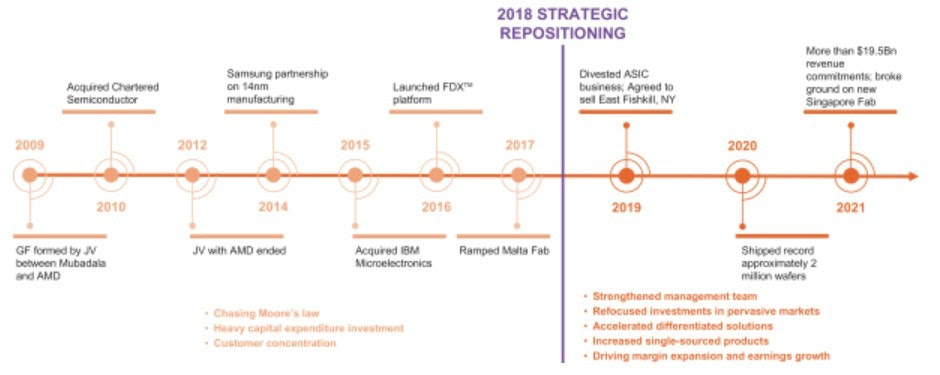In 2008, Mubadala, the Abu Dhabi government owned sovereign wealth fund assisted AMD in divesting their manufacturing assets and spinning them off. They were compensated with a combination of direct payments, investments in AMD, and shares in the new firm, GlobalFoundries. The divestiture was a multi-year journey, but by 2012, AMD was completely detached financially. AMD was still tightly intertwined due to the WSA (wafer supply agreements), but that is a story for another day. The GlobalFoundries spin-off helped keep AMD alive, but for Mubadala it became an endless money pit.

Mubadala paid $1.8B for Chartered Semiconductor, a large Singaporean Foundry in 2009. Mubadala continuously pumped in money on R&D, capital expenditures to keep fabs up to date on tooling, and even acquiring a new one. They eventually bought IBM’s chip making business, more on this later. Through the years, many missteps, bad investments, and business failures have caused them to lose over $22.4B! Many of the riches from oil money were squandered away, and now Mubadala is hoping to recoup the investment. GlobalFoundries is having an initial public offering. The valuation isn’t set in stone quite yet, but previous rumors stated $25B. That number very likely could be too high.
GlobalFoundries still retains many critical intellectual properties and is even the best in some niches, but the business itself doesn’t seem to be well run. It runs at an astonishingly low utilization rate of 84% in 2020. At the same time TSMC and UMC ran over 95%. Utilization rates are incredibly important in semiconductor manufacturing as there are an incredibly high number of fixed costs such as clean rooms, process R&D, and semiconductor capital equipment. These costs don’t change much as you ramp production up and down, so a well-run fab will run as close to 100% as possible all the time. While fabs like TSMC and UMC will go from making insane amounts of money to a moderate about when the cycle turns from shortage to oversupply, GlobalFoundries will look a whole lot uglier. The timing of going public is not a coincidence.













